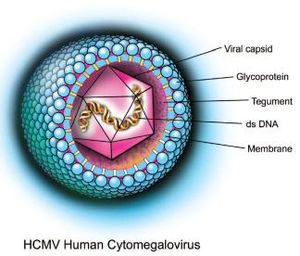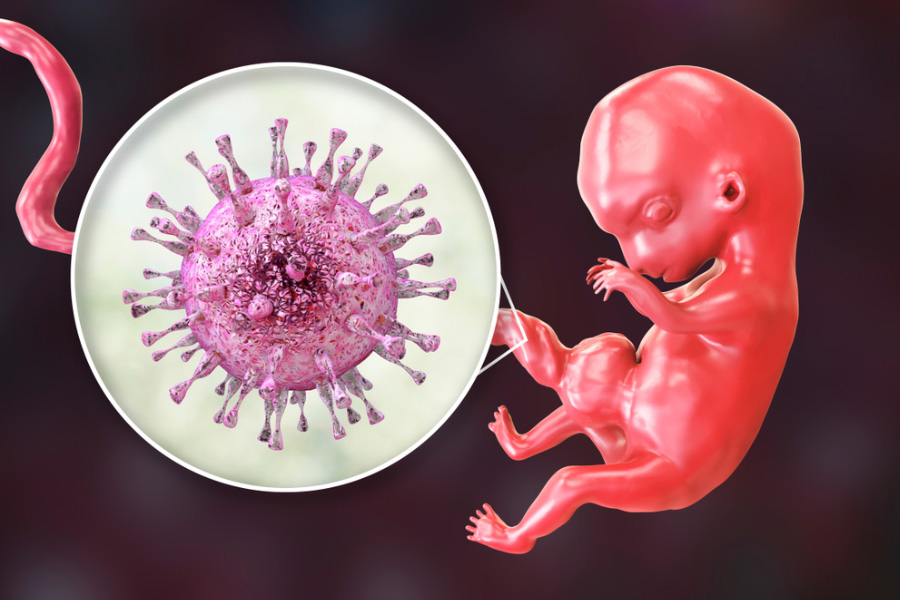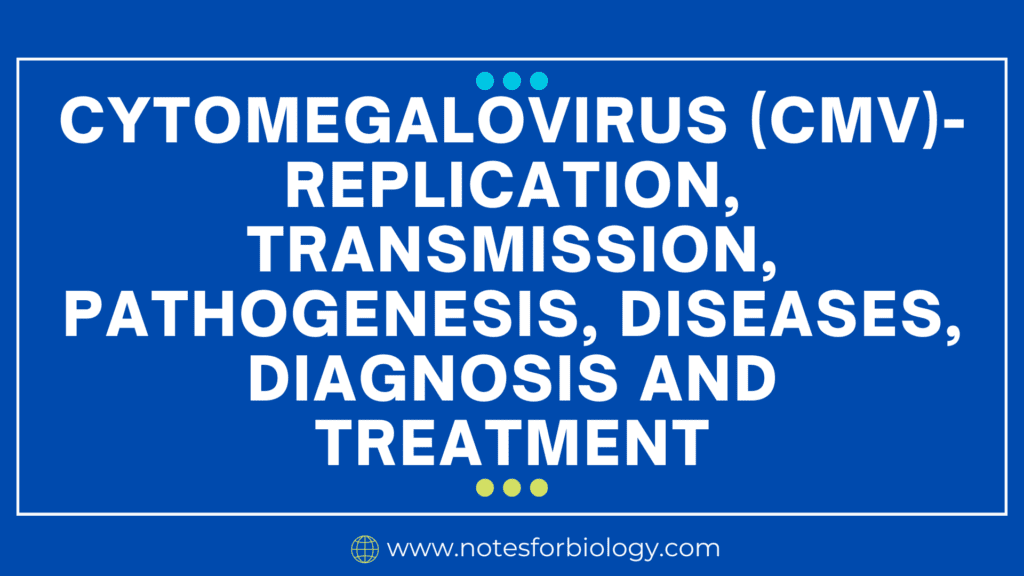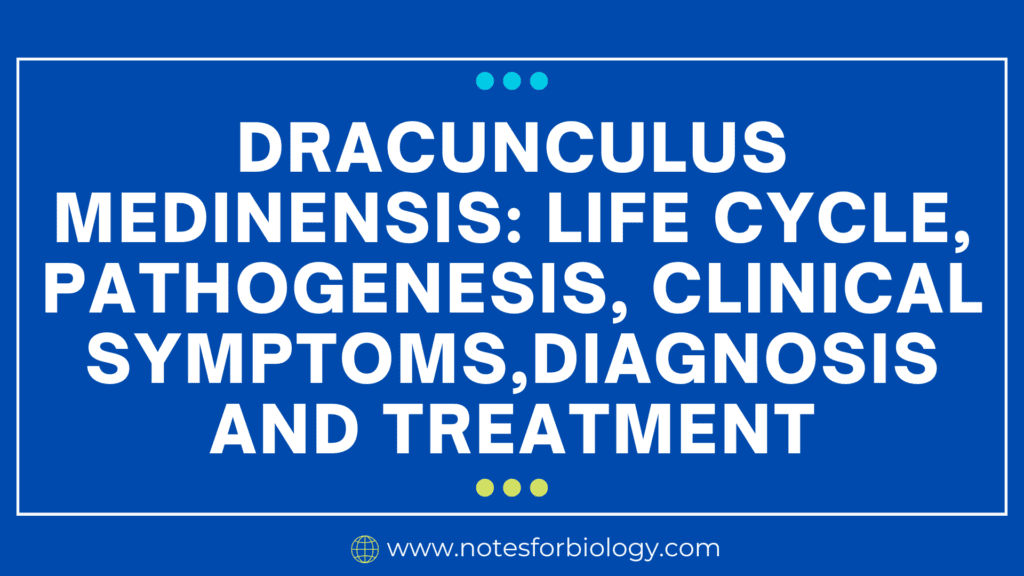What is Cytomegalovirus?

Cytomegalovirus (CMV), a ubiquitous human herpesvirus, belongs to the Betaherpesvirinae subfamily. Its name, derived from the characteristic “cytomegaly” (enlargement of cells) observed in infected tissues, hints at its complex and often insidious nature. CMV infection is widespread, with estimates suggesting over 60% of adults globally harboring the virus. While typically asymptomatic in healthy individuals, CMV can cause significant complications in newborns, immunocompromised patients, and those with underlying health conditions. This exploration will delve into the intricate world of CMV, examining its replication, transmission, pathogenesis, associated diseases, diagnostic tools, and available treatments.

Table of Contents
Replication: A Complex Dance of Viral and Host Machinery
Cytomegalovirus replication is a meticulous process, intricately woven into the host cell’s machinery. The virus begins its journey with the attachment and entry into the host cell. This occurs through a multistep process involving viral glycoproteins interacting with host cell receptors, initiating endocytosis or direct fusion. Once inside, CMV releases its DNA genome, which translocates to the nucleus. Here, the viral DNA circularizes and remains latent or, in active infection, initiates a cascade of gene expression.
The Cytomegalovirus genome encodes over 200 genes, which orchestrate the production of viral proteins crucial for replication. Early genes primarily focus on establishing the viral replication machinery within the host cell. Late genes, expressed later in the infection cycle, code for structural proteins that form new viral particles. These particles bud from the nuclear membrane and acquire their envelope from the Golgi apparatus. Finally, newly formed virions are released from the cell, ready to infect new targets.
Transmission: Diverse Pathways to Spread
Cytomegalovirus transmission occurs through various routes, highlighting its adaptability and persistence. The most common transmission occurs through contact with infected bodily fluids, including saliva, urine, blood, breast milk, and cervical secretions. This transmission can happen via direct contact, such as kissing or sharing utensils, or indirectly, through contaminated surfaces or blood products.
In the case of newborns, Cytomegalovirus infection can occur during pregnancy, passing through the placenta, or during childbirth. Congenital CMV infection can lead to severe complications in infants, including hearing loss, vision impairment, and cognitive disabilities.
Pathogenesis: A Battle Between Virus and Host
Cytomegalovirus pathogenesis, the development of disease, is characterized by a complex interplay between the virus and the host’s immune system. The virus establishes latency within the host, often in cells of the immune system, such as monocytes and macrophages. This latency allows Cytomegalovirus to persist for the lifetime of the host, reactivating under certain conditions, such as immunosuppression.
Active CMV infection triggers a vigorous immune response, with the production of antibodies and cytotoxic T lymphocytes (CTLs). This response usually controls the infection, but in certain individuals, the virus can evade the immune system and cause disease. The degree of severity depends on the host’s immune status and the site of infection.
Diseases: Diverse Manifestations of CMV Infection
CMV infection can lead to a range of clinical manifestations, varying in severity depending on the host’s immune status and the site of infection. In healthy individuals, CMV infection is often asymptomatic or causes mild flu-like symptoms. However, the virus can cause serious complications in vulnerable populations.
Congenital CMV Infection
As mentioned earlier, this form of infection can lead to serious developmental problems in infants, including hearing loss, vision impairment, cerebral palsy, and cognitive delays.
CMV Disease in Immunocompromised Individuals
In individuals with compromised immune systems, such as those with HIV/AIDS, transplant recipients, and cancer patients undergoing chemotherapy, Cytomegalovirus can reactivate and cause life-threatening infections. These infections can affect various organs, including the lungs, gastrointestinal tract, retina, and central nervous system.
Cytomegalovirus Retinitis
This condition occurs specifically in individuals with weakened immune systems, causing inflammation and damage to the retina. CMV retinitis can lead to vision loss and even blindness if left untreated.
Other CMV-Associated Diseases
Cytomegalovirus can also contribute to a range of other conditions, including hepatitis, pneumonia, encephalitis, and colitis, particularly in immunocompromised individuals.
Diagnosis: Unmasking the Silent Threat
Diagnosis of Cytomegalovirus infection relies on a combination of clinical evaluation, laboratory tests, and imaging techniques.
Clinical Evaluation
Based on the patient’s symptoms and history, clinicians can suspect CMV infection, especially in individuals with risk factors, such as immunosuppression or congenital CMV exposure.
Laboratory Tests
Serological tests: These tests detect antibodies against Cytomegalovirus in the blood, indicating past or current infection.
Viral culture: This method involves growing the virus in laboratory conditions, providing definitive confirmation of infection.
Polymerase chain reaction (PCR): This highly sensitive test detects the presence of CMV DNA in various samples, including blood, urine, and tissue.

Imaging Techniques: Imaging techniques like CT scans, MRI, and ophthalmoscopy can help visualize CMV-related lesions in various organs, aiding in diagnosis and monitoring.
Treatment: Combating the Persistent Virus
Treatment for CMV infection depends on the severity of the disease and the individual’s immune status.
Antiviral Medications: The primary treatment for CMV infection involves antiviral medications, particularly ganciclovir, valganciclovir, and foscarnet. These drugs inhibit viral DNA synthesis, slowing down the replication process.
Immunomodulatory Therapy: For individuals with severely compromised immune systems, immunomodulatory therapies, such as intravenous immunoglobulin (IVIG), may be used to enhance the immune response against CMV.
Supportive Care: In addition to antiviral therapy, supportive care, such as hydration, oxygen therapy, and management of secondary infections, is crucial for managing CMV infection.
Prevention: Limiting the Spread
Preventing CMV infection is crucial, especially for vulnerable populations.
Measures to Reduce Transmission
Handwashing: Frequent handwashing with soap and water can help prevent the spread of CMV through contact with infected bodily fluids.
Safe Sex Practices: Using condoms can help reduce the risk of CMV transmission through sexual contact.
Blood and Organ Screening: Screening blood and organ donors for CMV can minimize the risk of transmission through blood transfusions and organ transplantation.
Breastfeeding Precautions: Mothers with active CMV infection may need to consider alternative feeding methods to prevent transmission to their infants.
Conclusion: A Complex and Persisting Challenge
CMV, a ubiquitous human herpesvirus, poses a significant health threat, especially to vulnerable populations. Its complex replication cycle, diverse transmission routes, and ability to establish latency contribute to its persistence and impact. Understanding CMV’s pathogenesis, associated diseases, diagnostic tools, and available treatments is crucial for combating this persistent viral threat. By implementing preventive measures and providing appropriate treatment, we can mitigate the impact of CMV and improve the health of individuals at risk.
Frequently Asked Questions(FAQ)
What is cytomegaly?
A disorder called cytomegaly occurs when specific body cells grow abnormally large. The word literally from “megaly,” which is enormous, and “cyto,” which means cell. This expansion can impact different organs and tissues and happen in different places of the body.
Define Antiviral?
An antiviral is a type of medication that specifically targets and inhibits the replication of viruses within the body.
Related Articles




